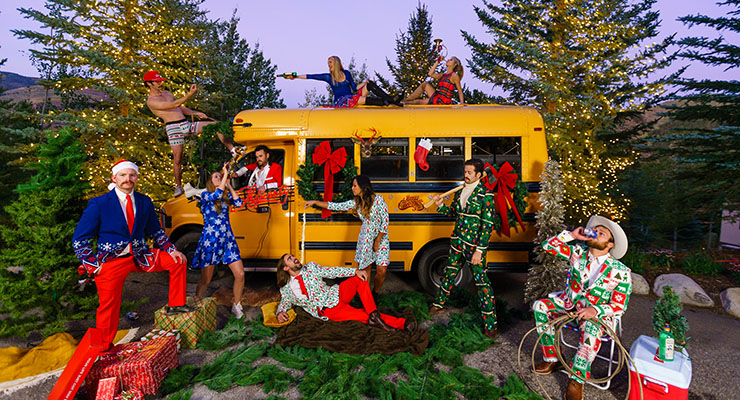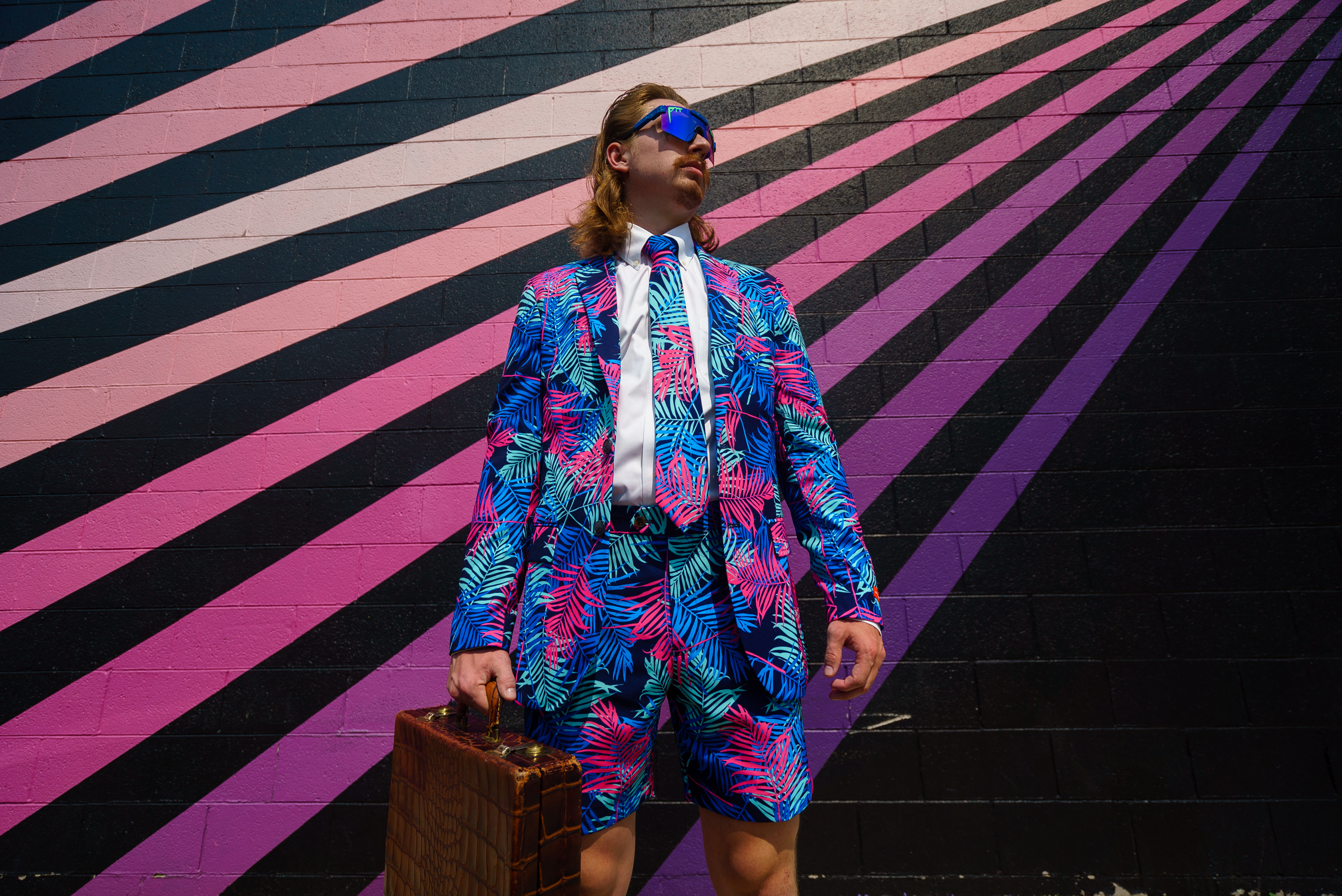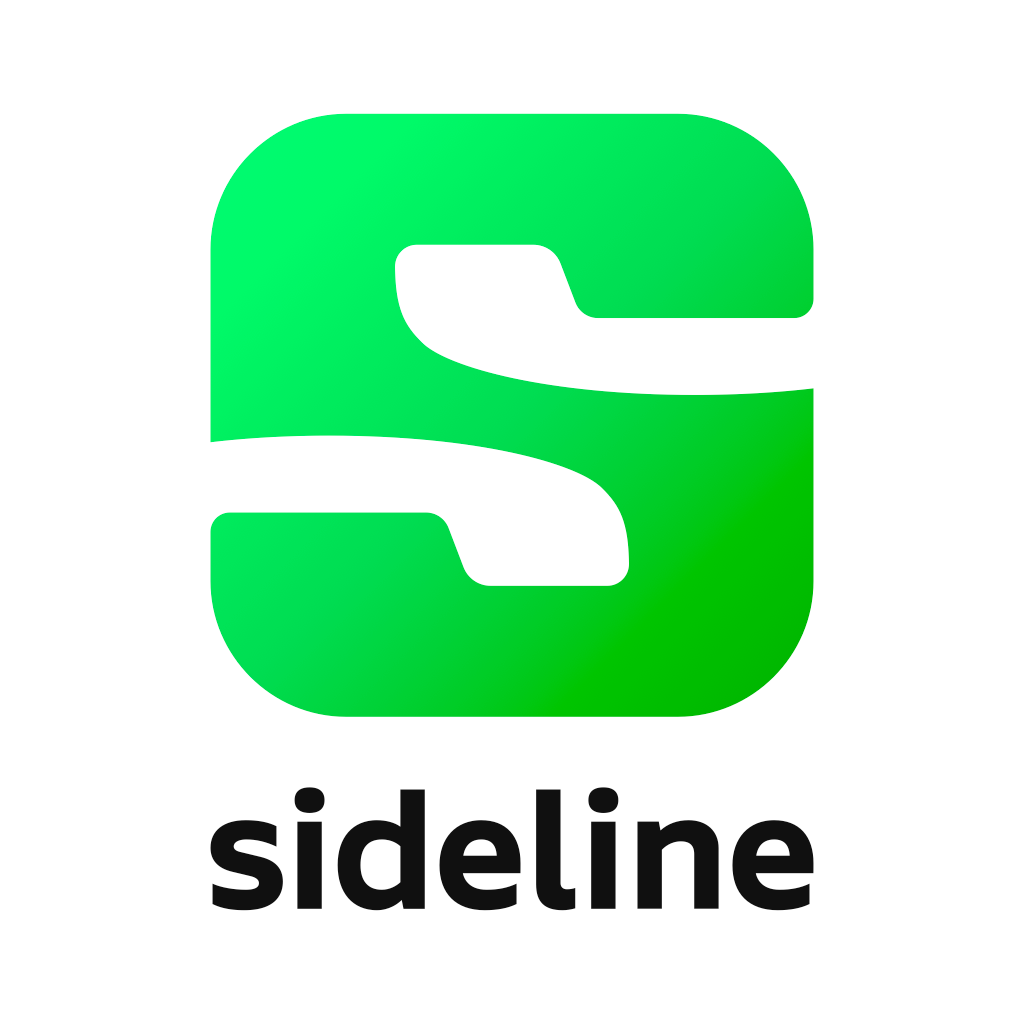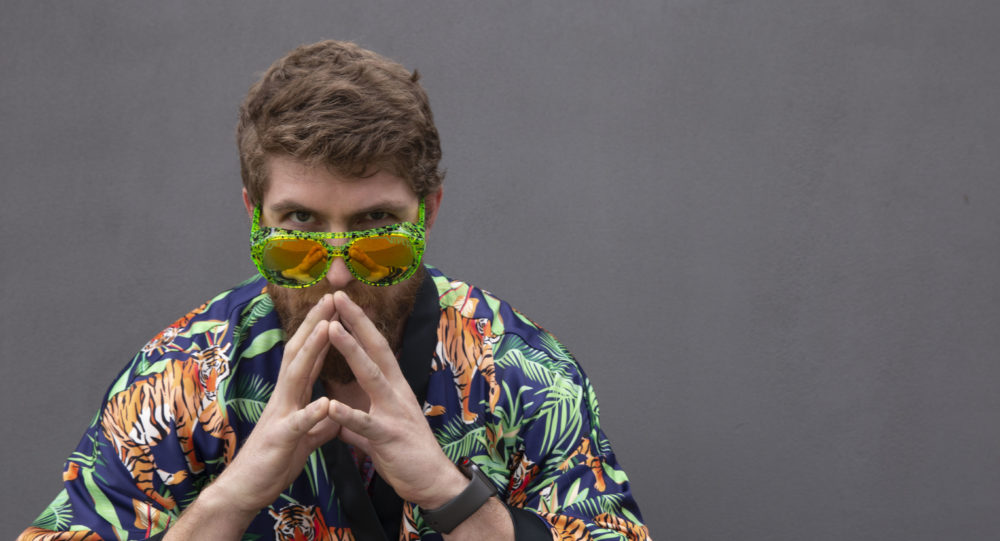Establishing a clear brand identity is important for small businesses to stand out and reach the next level of success. Online clothing company Shinesty infuses its brand identity, in all its outlandish glory, into every aspect of its business. We sat down with Jens Nicolaysen, Co-Founder and CMO of Shinesty, to hear how this clothing line rapidly became the life of the party.
Q: Give us an intro to Shinesty and how its brand identity came to be.
A: Shinesty makes the most outlandish line of clothing in the world. We’ve been around for over three years and are based in Boulder, Colorado. Our whole philosophy is to not take life too seriously, which forms the foundation of our brand identity. More broadly, we believe that the world shouldn’t take itself too seriously either. And I think our products really play off that mantra.
Even back when we were operating out of a garage, our brand was always about entertaining. This gives us the ability to do fun and interesting things, like creating ridiculous catalogs and videos that just make people laugh. By the time our customers are ready to make a purchase, we’ve already built a relationship with them. While most brands pummel you with salesy content you really don’t want, we try to create light and engaging content that entertains our customers.
Before Shinesty, I was consulting for large consumer goods companies and my business partner was working in tech. The work world felt stodgy and boring to us. Everyone took themselves so seriously. We reminisced about all the fun we had in college and the types of clothes that we wore. We had these awesome party closets, but we had to get rid of them to integrate with the real world.
At some point, we realized the party doesn’t stop after college—it just changes. People have more disposable income and can make travel plans with friends for festivals, concerts, or events. The party is still alive and well, but people generally have less time to look for fun and festive outfits. We also realized the seriousness of the ‘real world’ that we ditched our party clothes for was overrated. So, we dropped our day jobs and started a business to see if any customers out there felt the same way.
Q: How would you describe your customers?
A: Our customers come from all walks of life. Initially, we thought we’d sell to young professionals and college students, generally people between the ages of 18-30, but we were wrong. That age group is still a really important demographic for us, but we have people in their 70s and 80s buying our clothes and accessories, too. There is a much broader appeal than we could have ever imagined. Now, we think less about age and focus on targeting the people who want to have fun and don’t want to take themselves too seriously.

Q: Can you talk about how you’re using Sideline to build connections with your customers?
A: On an operational front, just like we assign company emails, we give everyone at our company a Sideline number so that they can separate their work and personal lives on their phones. Beyond that, we’ve also used Sideline as a part of our creative marketing campaigns. Ahead of the Christmas season, we sent hundreds of thousands of copies of our holiday catalog across the country. On one of the pages was a photo of a big yellow school bus that we had acquired. We included a phone number and a note that said, “text us for bus pricing.” The head of content and copywriting used his actual Sideline number, and when people texted the number, they couldn’t believe it actually worked and reached a real person. Nobody actually purchased the bus in the end (we still have it stationed at our office), but it was a great, fresh way to engage with our fans.
Q: Do you think that texting between businesses and their customers will stick?
A: For us, texting with customers is really about deepening engagement and less about making sales. At this point, every company knows about mass marketing tools, but the most successful brands will have to figure out a way to connect with customers in an authentic and personal way. They’ll stick out and be memorable in people’s minds. Almost no one is doing that right now.
…the most successful brands will have to figure out a way to connect with their customers in an authentic and personal way.
The really interesting thing with tech is that in the coming years, we’ll better understand how people want to separate their lives when it comes to social media, SMS, and email. They’ll figure out what communications platforms work best for them. The thing I like about SMS is that it’s one-on-one and personal. It’s typically reserved for friends, family, and people you care about. So naturally, I think we’re all more inclined to answer a text. It’s not just Shinesty reaching out to you, it’s an individual reaching out that you can directly talk with. Personal is powerful. And companies that give their customers a personal touch will thrive.

Q: What’s the busiest time of year for you guys?
A: Our peak times have changed as the company has evolved. We use to base everything around big events such as Christmas, 4th of July, Mardi Gras, and St. Patrick’s Day. While those are still a part of our “party calendar,” there are also events that happen every day or every weekend, like happy hours and birthdays. Or maybe you’re just a person who likes wearing boxers with a little baby penguin on your crotch. Today, people are shopping on the site year-round. And as a result, we’re branching into more lifestyle products now.
Q: How do you decide what products you’re going to curate and make next?
A: A lot of the brains behind it come from our internal team. We’re a bunch of bizarre and creative people and we come up with some wacky stuff. People who work for Shinesty are emblematic of the brand. That authenticity is really important to solidifying who we are. We also have a community tool that we built, called MadLabs, which lets people submit their ideas and designs. Looking ahead, we also see what’s trending, get inspiration from festivals and trade shows, and partner with artists to come up with new ideas.
Brands that don’t have a point of view tend to blend in with everyone else.
Q: What would you say has had the biggest impact to your growth as a company?
A: The main thing is our brand. We have a point of view. Some people love us and some people hate us. But for everyone that hates us, there is someone who loves us on a much deeper level. Brands that don’t have a point of view tend to blend in with everyone else. We try to imbed our brand personality into everything we do. It makes all our content creative and really stand out across channels, which has helped us build a lively, engaged group of fans who can’t believe there is a company that does what we do and sells what we sell.
![]()
Get Featured!
We’re always looking for new professionals to feature throughout our website and blog. If you are a Sideline user and want to share your story, fill out the form below for a chance to have your business featured!
As always, follow us on Facebook, Instagram, and Twitter to keep up
with everything that’s happening in the Sideline community.








